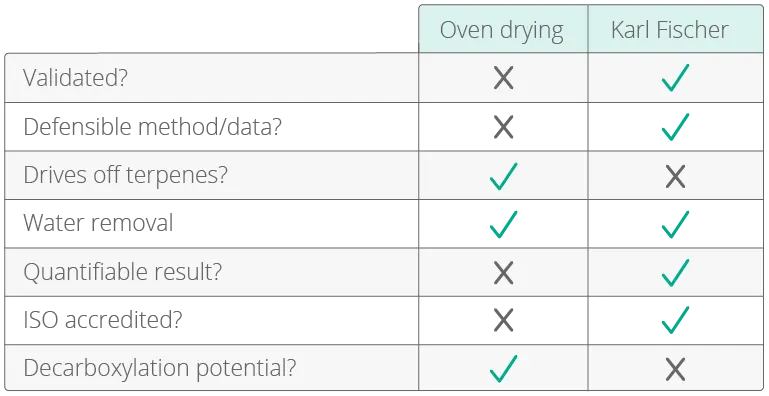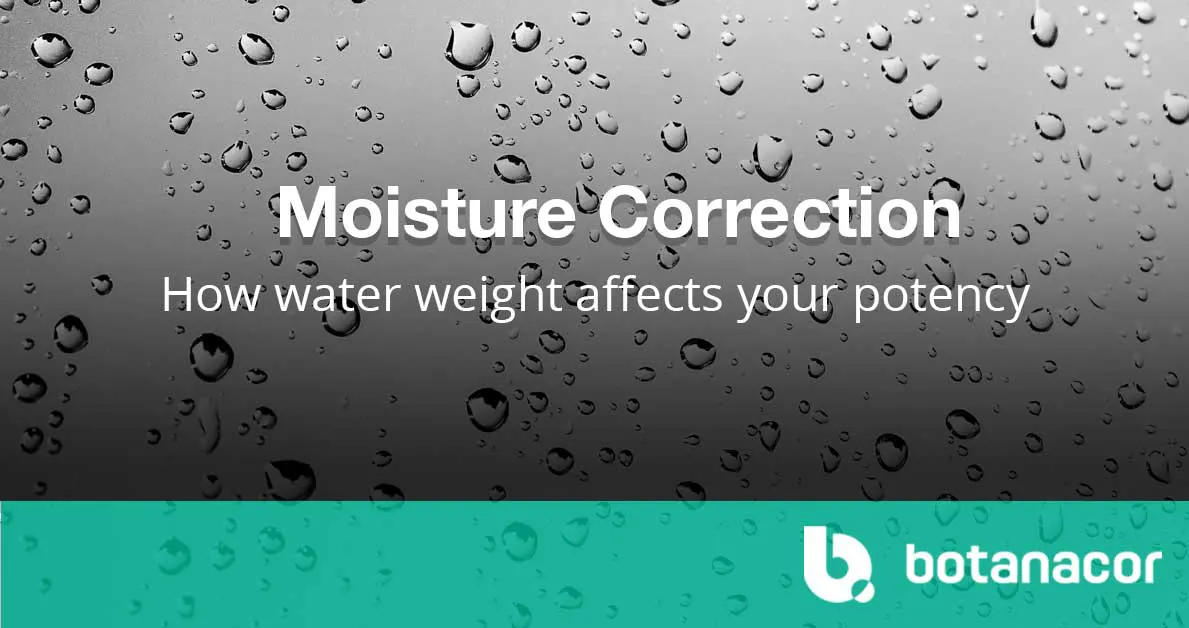Why is Moisture Correction so Important to Dry Weight Potency Testing?
In recent regulatory news, you may have seen that states, Indian tribes and U.S. territories have been submitting their official hemp plans to the USDA for approval, per the requirements of the Interim Final Rule (IFR). The USDA’s IFR requires hemp samples be taken in accordance with their sampling procedures and tested for Total THC concentration calculated on a dry weight basis. Laboratories, such as Botanacor, will dry the sample, test for Total THC and then “correct” the result for moisture content. The USDA also requires that laboratories report their measurement uncertainty (MU).
In preparation for the USDA regulations, Botanacor released a Dry Weight Potency test that will fulfill the requirements for compliance testing.
Why does the moisture content have to be “corrected”?
The USDA sampling procedures require states to use licensed sampling agents to collect representative samples. Sampling agents must collect raw (wet) hemp samples prior to harvest and send them directly to the laboratory for testing. Raw hemp can have a moisture content between 70-80%. If a laboratory were to test the raw sample as-is, the moisture content would skew the results. The USDA recognized this, and they now require laboratories to test samples on a dry weight basis to account for the moisture content in their calculations.
How does moisture content play a role in the concentration of THC?
Let’s consider two samples of flower. Both have a total THC content of 0.29%, but one has 30% more moisture than the other. The drier sample will have a higher percent of THC by weight, even though the two samples have the same amount of THC. Think of it another way, if you put equal drops of THC into a shot glass and a 55-gallon drum, both will have the same amount of THC, but the latter is more diluted.

How do you “correct” the sample for moisture content?
There are several methods to account for the moisture content of hemp. We will cover the most common method, oven drying, and the method Botanacor employs, Karl Fischer titration.
Loss on Drying (Oven-drying)
Most hemp laboratories will use a technique called Loss on Drying wherein the laboratory uses an oven to dry the sample until there is an assumed moisture content of zero. The process requires the lab to record an initial weight, and then the sample is placed in an oven at a specific temperature and time. After drying in the oven, the sample weight is recorded again. This process of heating and recording the weight continues until the weight levels off. At this point, the assumed moisture content is zero.
Oven drying is a simple approach to removing water weight, but it has limitations. The process is time consuming and could potentially delay results against an already tight 15-day harvest window. Oven drying can potentially drive off terpenes if the oven is too hot, thus concentrating the sample more than required by law. Another consideration is that if excessive heat is used in the drying process, the sample could decarboxylate and convert any THCa into delta-9 THC.
The Karl Fischer Method
At Botanacor, we use the Karl Fischer Method (KFM) for moisture detection. KFM can measure water levels as low as 1 ppm or 0.0001%.
KFM works in one of two ways, Coulometric or Volumetric, and both use titration.
You may remember from high school chemistry class that titration determines the concentration of a dissolved substance. A chemist adds a reagent of known concentration, to a test sample with which the sample reacts in a known proportion. Careful to note the precise amount of reagent added, a chemist proceeds until an “exactly equivalent” amount of titrate has been added to the sample. This equivalent amount is often indicated by a color change or an electrical property in the sample.
What’s the difference between Volumetric and Coulometric titrators? With the Volumetric method, titrant is added directly to the sample by a burette. With the much-more-sensitive Coulometric method, the titrant is generated electrochemically.
Using KFM to measure the moisture of the sample, Botanacor can use this value to determine dry weight potency without the need for long dry times or the potential to drive off terpenes or degrade your sample. This allows our customers to have greater confidence in the accuracy of Botanacor’s reports, and most importantly, in the regulatory compliance of their submitted samples.


